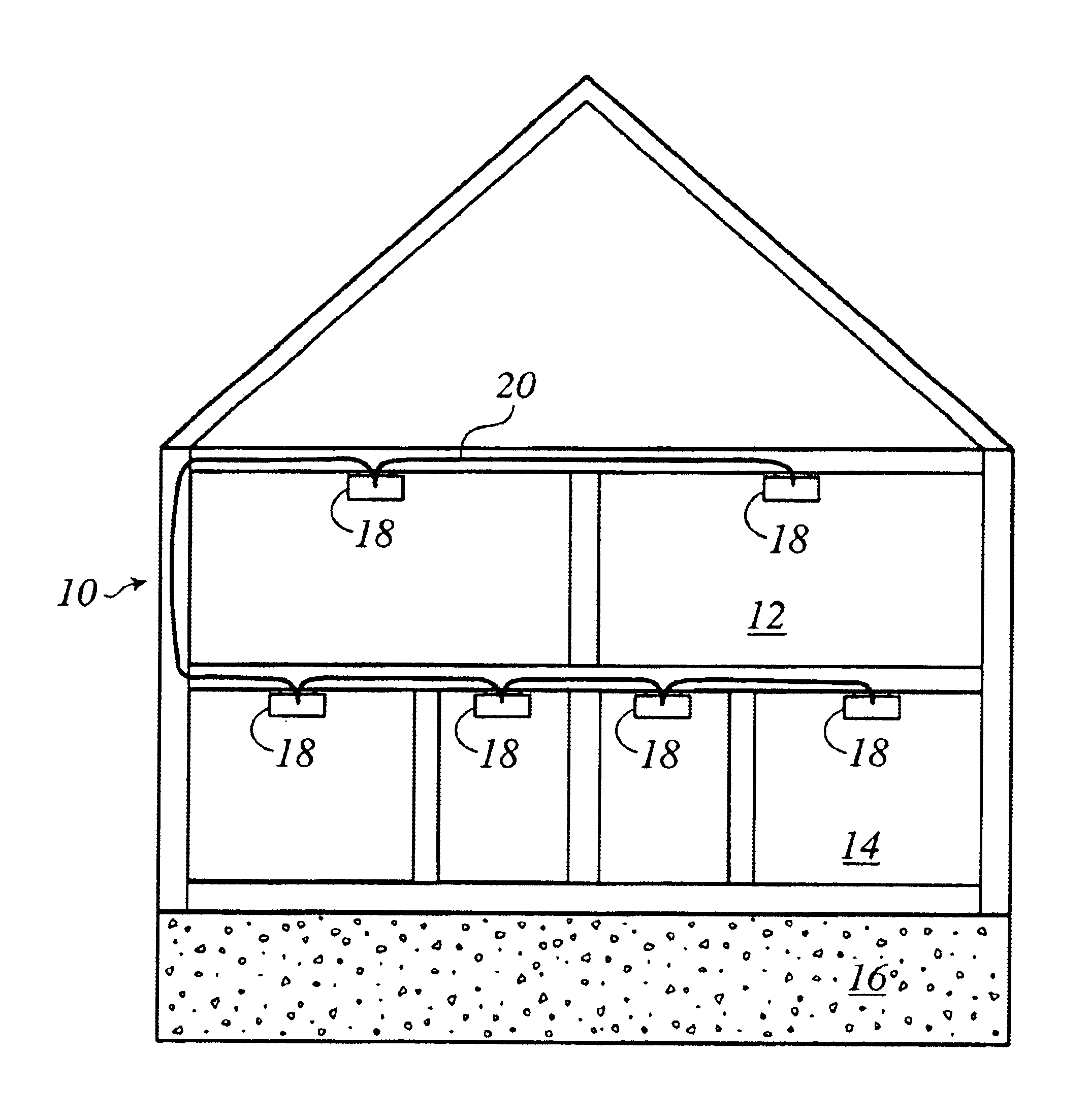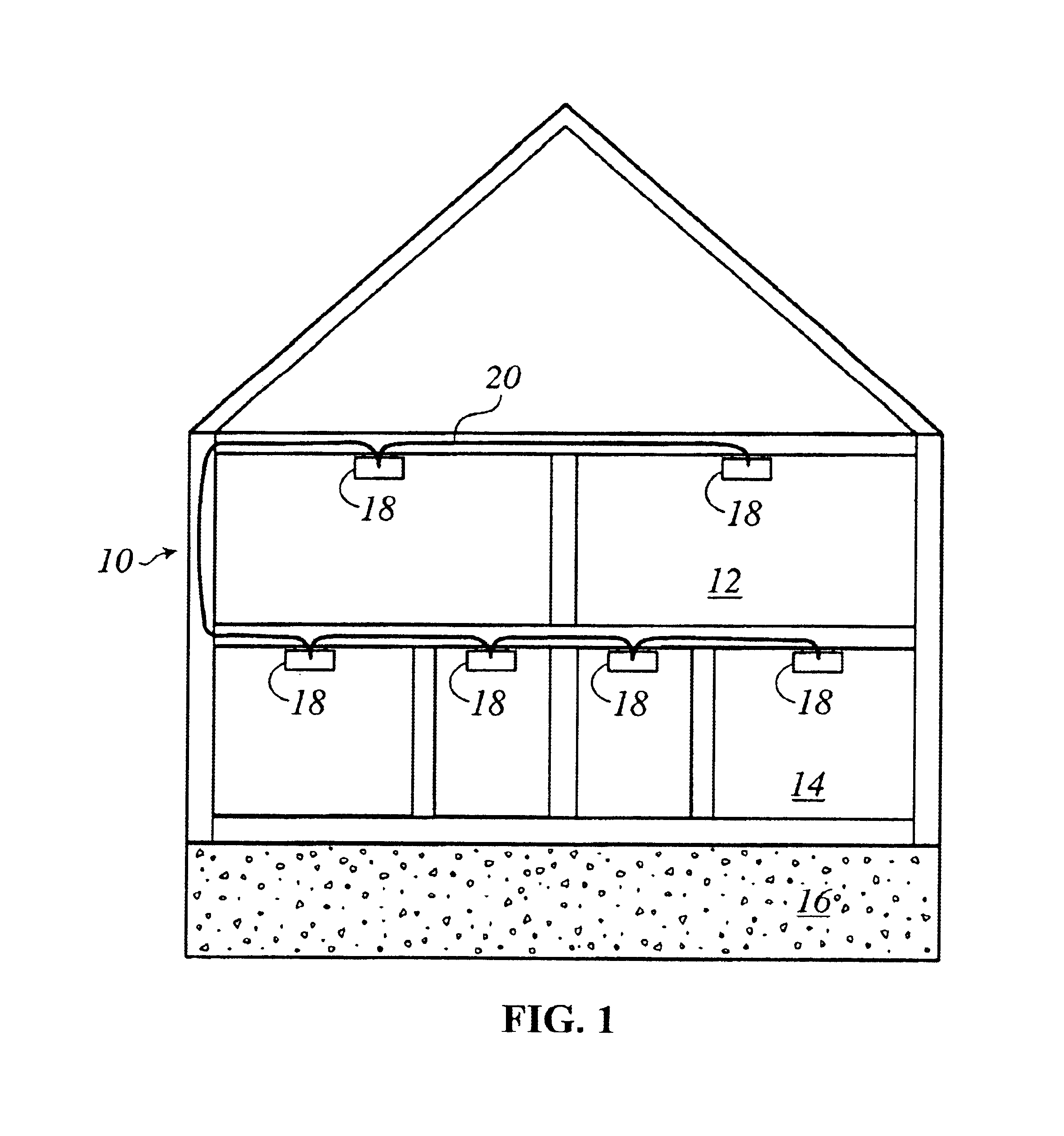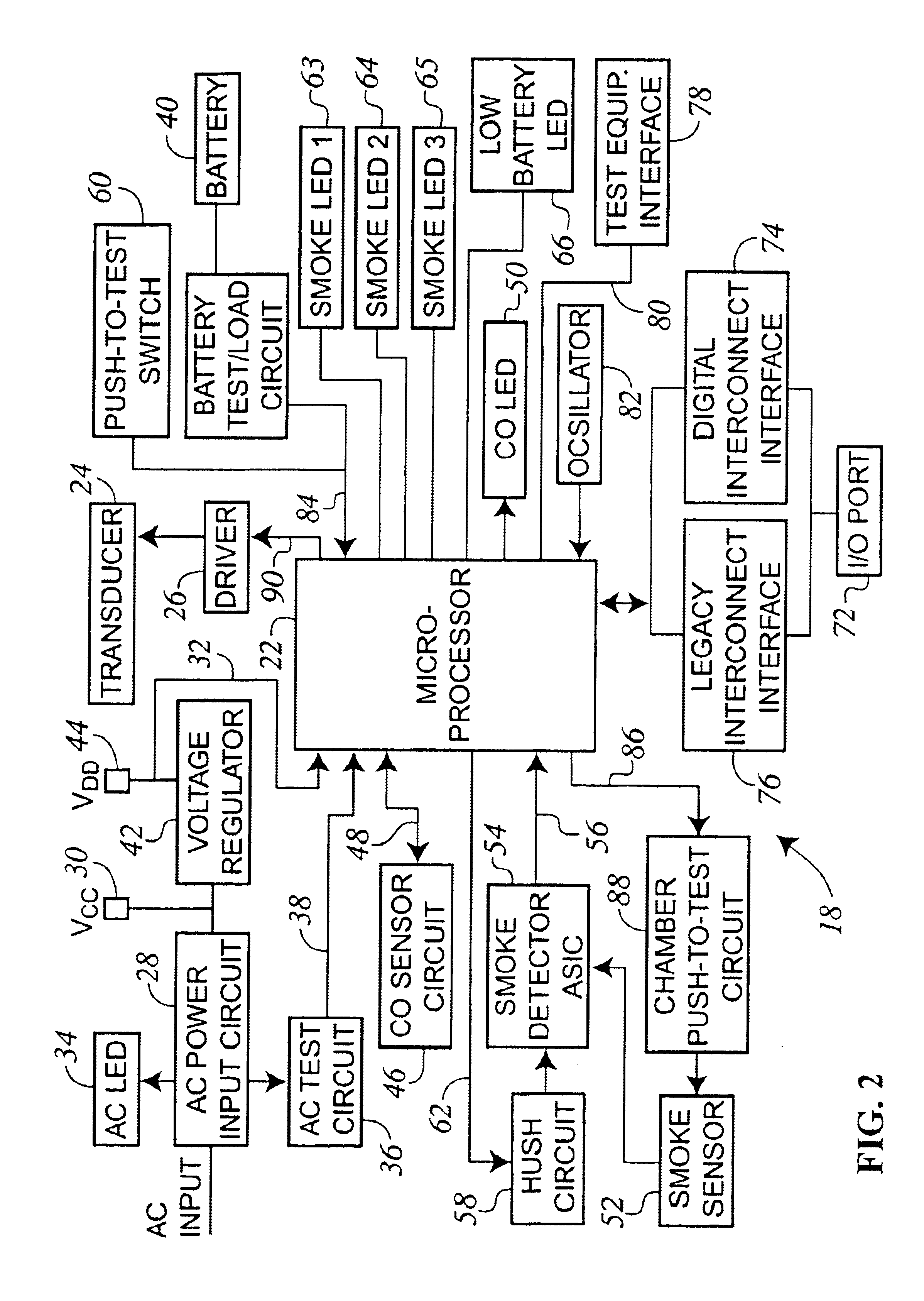Enhanced visual signaling for an adverse condition detector
a visual signal and detector technology, applied in the field of adverse condition detectors, can solve the problems of inability to immediately associate the visual signal being generated with the visual signal, the user of the adverse condition detector must know and be able, and the inability to remember and distinguish the two different audible alarm patterns. the effect of quick determination
- Summary
- Abstract
- Description
- Claims
- Application Information
AI Technical Summary
Benefits of technology
Problems solved by technology
Method used
Image
Examples
Embodiment Construction
[0028]FIG. 1 illustrates a facility 10 having multiple levels 12, 14 and 16 with rooms on each level. As illustrated, an adverse condition detector 18 is located in each of the rooms of the facility 10 and the detectors 18 are interconnected by a pair of common conductors 20. The plurality of adverse condition detectors 18 can communicate with each other through the common conductors 20.
[0029]In FIG. 1, each of the adverse condition detectors 18 is configured to detect a dangerous condition that may exist in the room in which it is positioned. Generally speaking, the adverse condition detector 18 may include any type of device for detecting an adverse condition for the given environment. For example, the detector 18 could be a smoke detector (e.g., ionization, photo-electric) for detecting smoke indicating the presence of a fire. Other detectors could include but are not limited to carbon monoxide detectors, aerosol detectors, gas detectors including combustible, toxic and pollution...
PUM
 Login to view more
Login to view more Abstract
Description
Claims
Application Information
 Login to view more
Login to view more - R&D Engineer
- R&D Manager
- IP Professional
- Industry Leading Data Capabilities
- Powerful AI technology
- Patent DNA Extraction
Browse by: Latest US Patents, China's latest patents, Technical Efficacy Thesaurus, Application Domain, Technology Topic.
© 2024 PatSnap. All rights reserved.Legal|Privacy policy|Modern Slavery Act Transparency Statement|Sitemap



